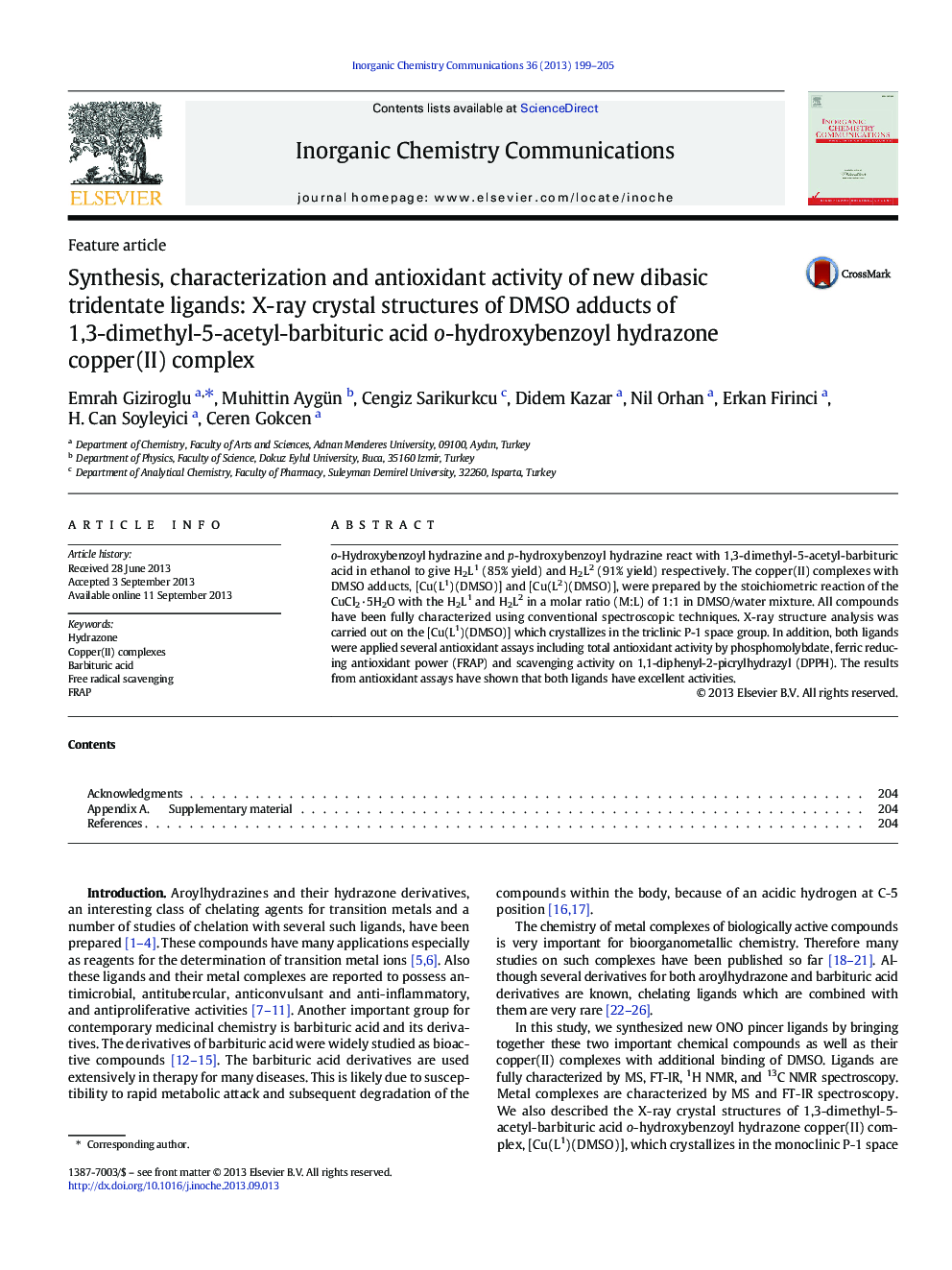| Article ID | Journal | Published Year | Pages | File Type |
|---|---|---|---|---|
| 1301894 | Inorganic Chemistry Communications | 2013 | 7 Pages |
•Two dibasic tridentate ligands as well as their copper(II) complexes were synthesized.•Several antioxidant assays have shown that both ligands have excellent activities.•The structure of [Cu(L1)(DMSO)] has been determined by X-ray crystallography.
o-Hydroxybenzoyl hydrazine and p-hydroxybenzoyl hydrazine react with 1,3-dimethyl-5-acetyl-barbituric acid in ethanol to give H2L1 (85% yield) and H2L2 (91% yield) respectively. The copper(II) complexes with DMSO adducts, [Cu(L1)(DMSO)] and [Cu(L2)(DMSO)], were prepared by the stoichiometric reaction of the CuCl2·5H2O with the H2L1 and H2L2 in a molar ratio (M:L) of 1:1 in DMSO/water mixture. All compounds have been fully characterized using conventional spectroscopic techniques. X-ray structure analysis was carried out on the [Cu(L1)(DMSO)] which crystallizes in the triclinic P-1 space group. In addition, both ligands were applied several antioxidant assays including total antioxidant activity by phosphomolybdate, ferric reducing antioxidant power (FRAP) and scavenging activity on 1,1-diphenyl-2-picrylhydrazyl (DPPH). The results from antioxidant assays have shown that both ligands have excellent activities.
Graphical abstracto-Hydroxybenzoyl and p-hydroxybenzoyl hydrazone derivatives of 1,3-dimethyl-5-acetyl-barbituric acid as well as their copper(II) complexes with DMSO adducts were synthesized. X-ray structure analysis was carried out on the [Cu(L1)(DMSO)] which crystallizes in the triclinic P-1 space group. In addition, both ligands were applied three antioxidant assays. The results from antioxidant assays have shown that both ligands have excellent activities.Figure optionsDownload full-size imageDownload as PowerPoint slide
